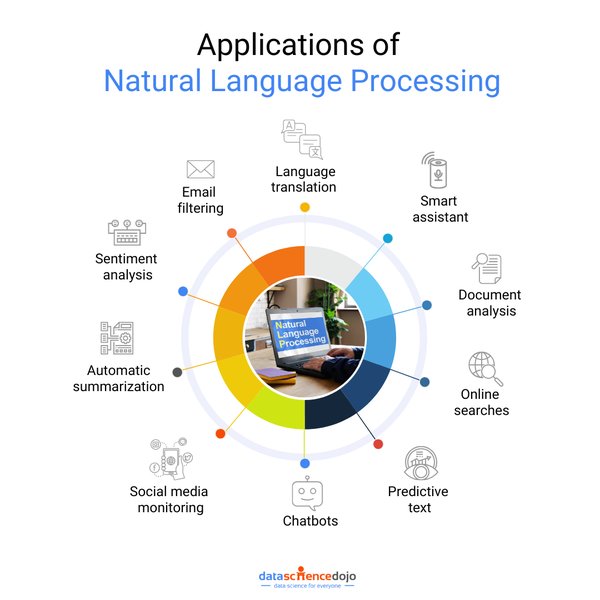
Unlock Platform Potential: Finding the Premier AI Development Tool for Natural Language Prompting
Navigate the landscape of AI coding assistants to find the best fit for quality code, value, and intuitive platform development via NLP.
In 2025, Artificial Intelligence (AI) has profoundly reshaped software development. AI development tools, particularly those leveraging powerful Large Language Models (LLMs), are no longer novelties but essential components of the modern developer's toolkit. These tools assist with everything from generating boilerplate code and complex algorithms to debugging, testing, and even designing entire application architectures—often guided by simple natural language prompts. Choosing the "best" tool requires careful consideration of code quality, overall value, and crucially, its proficiency in understanding and acting upon natural language instructions to develop, design, and implement software platforms.
Essential Insights: Top AI Development Tools
- GitHub Copilot stands out for its deep integration within the development ecosystem, strong code generation quality powered by advanced models like GPT-4, and effective natural language prompting capabilities (especially via Copilot Chat).
- Cursor offers a compelling alternative, particularly valued for its integrated AI-native code editor experience, context-aware chat features that utilize your codebase, and strong performance in code generation and debugging tasks based on natural language.
- Code quality remains paramount, and while leading tools generate high-quality suggestions, human oversight is crucial. Tools incorporating features for code review, security scanning (like Amazon CodeGuru), and adherence to best practices offer significant advantages.
The Rise of Natural Language in AI-Powered Development
Why Natural Language Prompts are Game-Changers
The ability to interact with development tools using natural language ("plain English") represents a significant leap in efficiency and accessibility. Instead of meticulously writing code line-by-line or searching for specific library functions, developers can describe the desired functionality, architecture, or fix they need. For example, a prompt like "Design a REST API endpoint in Python using Flask that accepts user data (name, email) and stores it in a PostgreSQL database" can generate substantial, relevant code blocks.
This capability is particularly impactful for:
- Platform Design: Brainstorming and scaffolding application architecture based on high-level descriptions.
- Rapid Prototyping: Quickly generating functional code for features to test ideas.
- Complex Logic Implementation: Translating intricate requirements into code without getting bogged down in syntax details.
- Debugging and Refactoring: Explaining issues or desired code improvements in natural language to get targeted suggestions.
- Documentation Generation: Automatically creating docstrings or explanations for code segments.

AI tools leverage Natural Language Processing (NLP) to understand and execute development tasks based on human language prompts.
Evaluating Tools Based on NLP Proficiency
When assessing AI tools for natural language-driven platform development, consider:
- Contextual Understanding: Does the tool understand the broader context of your project, including existing code, frameworks, and dependencies? Tools like Cursor excel here by referencing your codebase.
- Complexity Handling: Can it manage multi-step or complex prompts that describe intricate workflows or architectures?
- Accuracy and Relevance: How accurately does the generated code match the intent described in the prompt?
- Iterative Refinement: Can you easily refine the generated code through follow-up prompts?
Comparing Top AI Development Contenders in 2025
Several AI development tools have emerged as leaders, each with distinct strengths. The ideal choice often depends on specific project needs, existing workflows, and priorities regarding code quality versus speed or integration.
Key Factors for Comparison
We evaluate the leading tools based on the criteria central to your query:
- Code Quality: Assessing the generated code's correctness, efficiency, security, maintainability, and adherence to best practices. Some analyses, like GitClear's longitudinal study, suggest caution, as AI-generated code can sometimes introduce subtle issues ("code churn") if not carefully reviewed.
- Value Proposition: Considering the tool's cost (including free tiers), range of features, integration capabilities (IDE support, version control), impact on developer productivity (ROI), and data privacy policies.
- Natural Language Capabilities: Evaluating how effectively the tool interprets and acts upon natural language prompts for tasks spanning platform design, development, implementation, and debugging.

AI assistants are increasingly integrated into the software development lifecycle, impacting coding behaviors and quality considerations.
Spotlight on Leading Tools
GitHub Copilot
Powered by advanced OpenAI models (like GPT-4) and fine-tuned by GitHub, Copilot is perhaps the most widely adopted AI coding assistant. It integrates seamlessly into popular IDEs (VS Code, JetBrains, Neovim) and the broader GitHub ecosystem.
- Code Quality: Generally high, benefiting from training on vast amounts of code. It excels at code completion, generating boilerplate, writing tests, and suggesting fixes. Copilot Chat enhances its ability to understand context and respond to complex natural language queries.
- Value: Offers significant productivity gains. A free tier provides limited completions, while paid tiers ($10-$19/month for individuals as of early 2025 estimates) offer extensive usage and advanced features like chat. Its deep integration offers value for teams already using GitHub.
- NLP Strength: Strong, especially with Copilot Chat, which allows conversational interaction for design discussions, debugging, and code generation based on detailed prompts.
Cursor
Cursor positions itself as an AI-native code editor, building AI assistance directly into the IDE experience rather than treating it as a plugin. It often appears at the top of benchmarks for code generation quality.
- Code Quality: Highly regarded, often cited for generating accurate and contextually relevant code. Its ability to reference your entire codebase ("@-mention" files/symbols) when chatting significantly improves the quality and relevance of its suggestions and generated code.
- Value: Offers free and paid tiers. While potentially having a slightly higher price point for teams, its integrated experience and advanced features (like auto-debugging) provide compelling value for developers seeking a dedicated AI coding environment.
- NLP Strength: Excellent. The chat interface is central to the experience, designed for natural language interaction to edit, generate, debug, and understand code with deep project context.
Other Notable Tools
- Aider: Praised for handling complex prompts and generating high-quality, maintainable code, especially in command-line interface (CLI) based workflows. Strong for iterative development via NLP.
- Amazon CodeWhisperer & CodeGuru: CodeWhisperer focuses on code generation, particularly strong for AWS services. CodeGuru specializes in AI-powered code reviews and security analysis, enhancing code quality post-generation. Valuable within the AWS ecosystem.
- Codeium: Known for its generous free tier for individuals, broad IDE support, and strong privacy focus (offering self-hosted options). Provides solid code completion and chat features.
- Qodo: An emerging tool emphasizing precise suggestions, test generation, and adherence to best practices. Focuses on high-standard code development.
- Tabnine: Another established player offering code completions and AI chat, known for its model flexibility and enterprise features.
Visualizing Tool Capabilities: A Comparative Radar Chart
Relative Strengths Across Key Dimensions
The following chart offers a visual comparison of some leading AI development tools based on our synthesized analysis. Ratings are subjective estimates (scale 2-10, higher is better) reflecting general consensus and reported strengths across key evaluation criteria relevant to platform development using natural language prompts.
Mapping the Selection Process
Key Considerations for Choosing Your AI Tool
This mindmap outlines the essential factors involved when selecting an AI development tool tailored for platform development using natural language prompts. It highlights the criteria, leading tools, integration points within the development lifecycle, and overarching considerations.
(for Platform Dev via NLP)"] id1["Key Criteria"] id1a["Code Quality
(Accuracy, Security, Maintainability)"] id1b["Value Proposition
(Cost, Features, ROI)"] id1c["Natural Language Proficiency
(Prompting for Design, Dev, Impl)"] id2["Top Contenders"] id2a["GitHub Copilot
(Ecosystem, GPT-4)"] id2b["Cursor
(Context-Aware Chat, Editor)"] id2c["Aider
(Complex Prompts, CLI)"] id2d["Others
(Codeium, Qodo, Amazon Tools)"] id3["Platform Lifecycle Integration"] id3a["Design
(Architecture Ideas, Scaffolding)"] id3b["Development
(Code Generation, Boilerplate)"] id3c["Implementation
(Deployment Scripts, Configs)"] id3d["Maintenance
(Debugging, Refactoring, Docs)"] id4["Important Considerations"] id4a["IDE/Workflow Integration"] id4b["Security & Privacy Policies"] id4c["Learning Curve & Ease of Use"] id4d["Necessity of Human Oversight"]
Feature Comparison: AI Development Tools
A Quick Overview of Leading Options
The table below summarizes key aspects of the most frequently discussed AI development tools, helping you compare their offerings at a glance based on the criteria of code quality, value, and NLP capabilities for platform development.
| Tool | Key Features | Code Quality Focus | NLP Strength | Value Proposition | Best For |
|---|---|---|---|---|---|
| GitHub Copilot | Code completion, Chat (NLP), Test generation, IDE integration (VS Code, JetBrains), Vulnerability filtering | High, leverages large codebases & advanced models, requires review | Strong, especially with Copilot Chat for complex prompts & context | Excellent integration value, free/paid tiers, high productivity boost | Developers in the GitHub ecosystem, general-purpose coding, NLP-driven tasks |
| Cursor | AI-native editor, Context-aware chat (@-mentions), Auto-debugging, Code generation & editing | Very High, excels with project context awareness | Excellent, core feature for interacting with the codebase via natural language | Strong value via integrated experience, free/paid tiers | Developers wanting a deeply integrated AI coding environment, context-sensitive tasks |
| Aider | CLI-based interaction, Handles complex prompts, Code generation & modification, Git integration | High, focuses on maintainable code from prompts | Strong, particularly for complex multi-step instructions | Good value for specific workflows, free/paid options | CLI users, complex project generation from prompts, iterative development |
| Amazon CodeWhisperer | Code completion, Security scans, AWS service optimization, IDE integration | Good, optimized for AWS, includes security checks | Moderate, primarily focused on code suggestion based on context | High value within AWS ecosystem (often free tier available), security focus | Developers heavily using AWS services |
| Codeium | Code completion, Chat, Broad IDE support, Self-hosting option | Solid, general-purpose quality | Good, offers chat for NLP interaction | Excellent value via generous free tier, strong privacy options | Individual developers, privacy-conscious users, broad IDE compatibility needs |
Expert Perspectives: AI Coding Tool Comparisons
Insights from Industry Analysis
Understanding the nuances between different AI coding tools is crucial for making an informed decision. This video provides insights into comparing various tools available in 2025, discussing use cases and market trends, which can help contextualize the choices like Cursor and others mentioned in this analysis.
This discussion offers perspectives on the competitive landscape of AI coding tools, including comparisons relevant to developers evaluating options like Cursor and Windsurf for their workflows.
Frequently Asked Questions (FAQ)
Clarifying Common Queries About AI Development Tools
What defines 'high-quality' AI-generated code?
Is human review still necessary when using these AI tools?
Are there good free AI development tools available?
How do these tools handle code security and privacy?
What's the difference between code completion and NLP for platform design?
Recommended Next Steps
To further explore AI's role in development and specific tool capabilities, consider these related queries:
- How does GitHub Copilot compare to Cursor for enterprise teams?
- What are the best practices for reviewing AI-generated code?
- Explore AI tools specializing in code security analysis.
- How to effectively write natural language prompts for AI code generation?
References
This response synthesized information from various analyses and comparisons of AI development tools. Here are some of the key sources referenced:
Last updated May 5, 2025